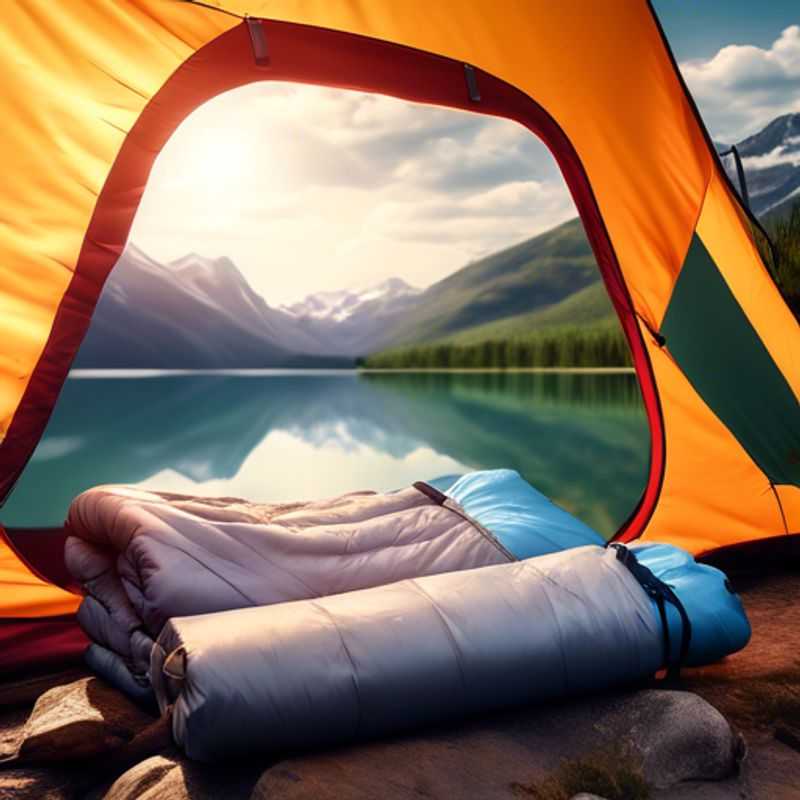What You NEED to Know Before Buying a Light Sleeping Bag or Travel Sheet: 3 Tips for Camping & Remote Adventures

Temperature Rating: Choosing the Right Sleeping Bag or Travel Sheet for Your Adventure
Weight and Packability: Finding the Perfect Balance of Comfort and Portability
Durability and Cleanability: Investing in Gear That Can Handle the Elements
Alright, adventurers, let's talk about sleeping bags and travel sheets.
- Ensure the sleeping bag or travel sheet is rated for the expected temperatures in the area you'll be visiting. This is crucial for a comfortable and safe sleep, especially in remote areas.

Choosing the Right Sleeping Bag: How Temperature Ratings Can Save Your Adventure
You're heading out on an adventure, and you've got your trusty backpack packed with everything you need. But have you considered the temperature where you'll be sleeping? It's essential to choose a sleeping bag or travel sheet rated for the expected temperatures in your destination. Why? Because a good night's sleep can make or break your trip.
Imagine yourself trekking through a breathtaking landscape, only to be plagued by shivers and discomfort because your sleeping bag isn't up to the task. Or, worse, imagine waking up drenched in sweat because your sleeping bag is too warm for the climate.
Sleeping bags are rated based on a temperature scale, usually in Fahrenheit or Celsius. The rating indicates the lowest temperature at which the bag can keep a person warm and comfortable. So, if you're heading to a cold climate, you'll want to choose a bag rated for the lowest temperature you expect to encounter.
Remember: always err on the side of caution. If you're unsure, it's always better to choose a bag with a higher rating than a lower one. And if you're traveling in a region with varying temperatures, you can consider bringing a liner that can be added or removed as needed to adjust your warmth level.

Sleeping Bag Smackdown: Weight and Packability for the Wandering Soul
When considering the weight and packability of a sleeping bag or travel sheet, it's crucial to think about your adventure. If you're hiking or traveling with limited space, packability becomes paramount. A lightweight and compressible sleeping bag or travel sheet is a game-changer. Look for bags with a low pack size. You'll be thankful for the extra space in your backpack, especially when you're on the move. For backpacking trips, prioritize ultralight options. These bags are typically made with advanced materials, offering warmth and comfort without weighing you down. You can find ultralight sleeping bags weighing as little as 1-2 pounds. Just remember, the weight and packability of your sleeping bag or travel sheet directly impact your overall comfort and enjoyment on your journey.

Sleeping Bag and Travel Sheet Reviews: Don't Get Caught Sleeping on Durability and Cleanliness
When you're planning a trip, whether it's a trek across the Himalayas or a simple camping trip in the woods, a good sleeping bag is a must-have. But with so many options on the market, how do you know which one to choose? The truth is, finding the perfect sleeping bag is like searching for the Holy Grail. But fear not, my fellow adventurers, for I have scoured the market and uncovered the secrets to choosing the right one for your journey.
The first thing to consider is the temperature rating. This tells you how cold the bag can withstand while keeping you warm. It's not about feeling cozy, but about preventing hypothermia! So, choose a bag with a rating lower than the coldest temperature you expect to encounter.
Another crucial factor is weight and packability. You don't want to be carrying around a sleeping bag that feels like a lead weight, especially if you're backpacking. Look for a bag that's lightweight and packs down small for easy carrying.
The material is also important. There are three main types: down, synthetic, and a combination of both. Down is the warmest, but it loses its insulating properties when wet. Synthetic is less warm but more moisture resistant. You'll need to choose based on your trip's climate and your activity level.
Finally, don't forget to check reviews. Look for reviews from other adventurers who have used the bag in similar conditions. This will give you valuable insight into the bag's durability, comfort, and overall performance.
Remember, my dear adventurers, choosing the right sleeping bag is not just about finding comfort; it's about finding peace of mind. After all, a good night's sleep is essential for any journey, especially when you're facing the unknown.
